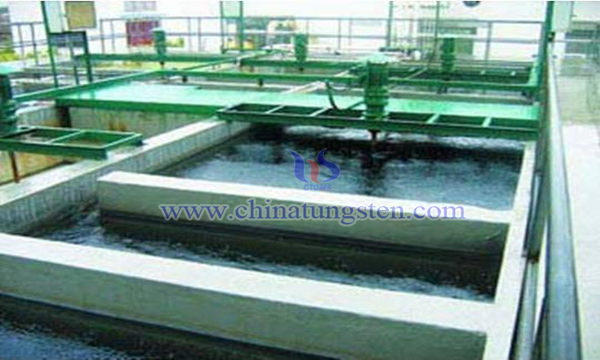Tungsten Trioxide-Carbon Nitride-Bismuth Oxide-Double Z Photocatalyst
- Details
- Category: Tungsten Information
- Published on Saturday, 25 May 2019 22:17
In recent years, with the deep research on semiconductor heterojunction and Z-type mechanism, in order to solve the problem of carbon nitride, scientists usually use other semiconductor materials to form a heterojunction with carbon nitride, for example: carbon nitride / trioxide The tungsten binary heterojunction can expand the spectral range of light absorption by constructing a hybrid system, suppress the recombination of photoelectrons and holes, and obtain higher redox performance.

However, some scholars believe that the binary Z-type photocatalytic material carbon nitride-tungsten trioxide is still not perfect and needs to be upgraded. On the basis of the original, the scientists added yttrium oxide to form a ternary structure photocatalyst. Tungsten trioxide-carbon nitride-bismuth oxide double Z-type photocatalyst. Its over-synthesis process includes:
(1) 100 mg of tungstic acid, 100 mg of cerium nitrate pentahydrate and 4 g of melamine were placed in an agate mortar and uniformly mixed, and continuously ground for 30 minutes to obtain a mixture precursor.
(2) The obtained mixture precursor is placed in a crucible, the lid is covered, and placed in a muffle furnace for calcination, specifically: controlling the heating rate of the muffle furnace to be 10 °C / min, first raising the temperature to 520 °C. After maintaining for 2 h, the temperature was raised to 540 °C at a heating rate of 10 °C / min for 2 h, and the calcined product obtained after the completion of the calcination was cooled and ground to obtain a tungsten trioxide / carbon nitride / cerium oxide double Z type photocatalyst.
The development of tungsten trioxide-carbon nitride-bismuth oxide double Z-type photocatalyst is of great significance for the efficient degradation of pollutants in wastewater (such as antibiotics). In the application of degrading tetracycline wastewater, the new photocatalyst is in photocatalytic reaction. The degradation efficiency of TC after 60 min was 80.2%, and the degradation rate was 0.02367 min-1.
- Tungsten Oxide Manufacturer & Supplier, Chinatungsten Online: www.tungsten-oxide.com
- Tungsten News & Prices of China Tungsten Industry Association: www.ctia.com.cn
- Molybdenum News & Price: news.molybdenum.com.cn
- Tel.: 86 592 5129696; Fax: 86 592 5129797; Email: sales@chinatungsten.com



 sales@chinatungsten.com
sales@chinatungsten.com